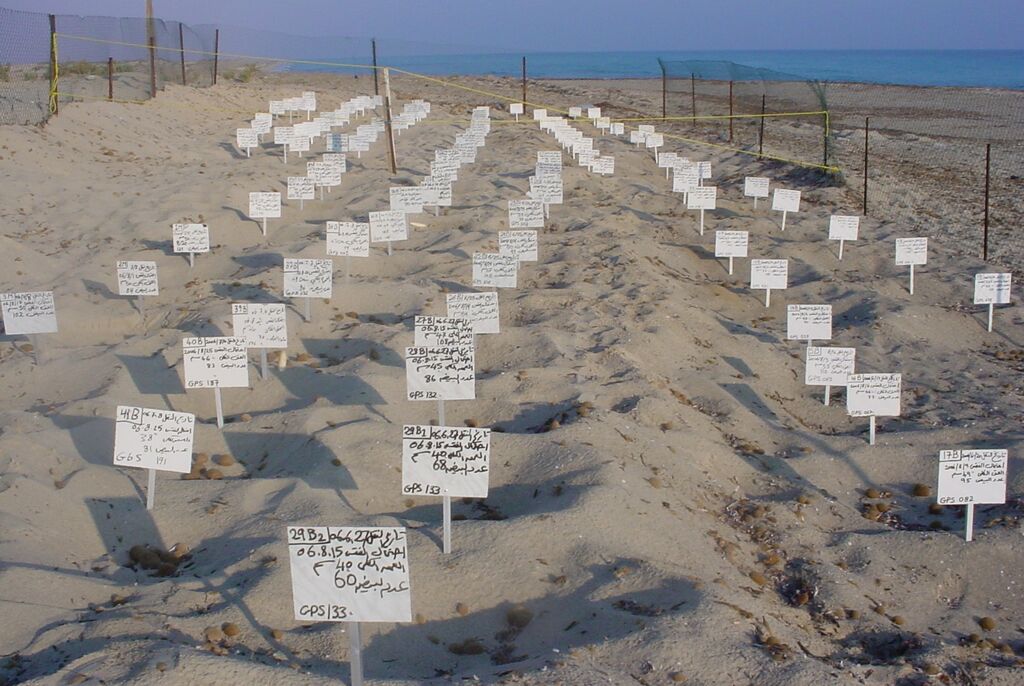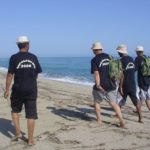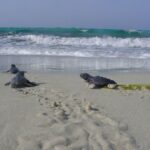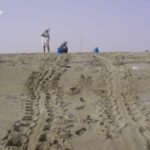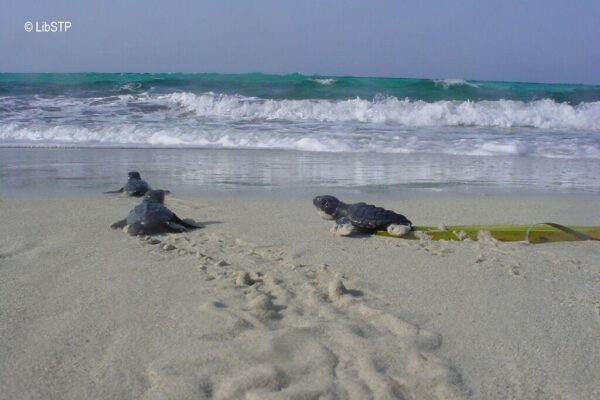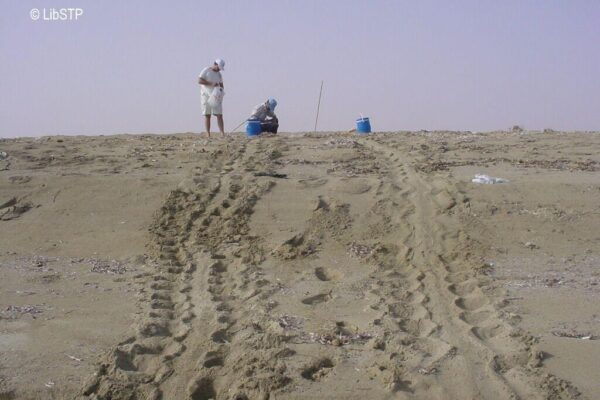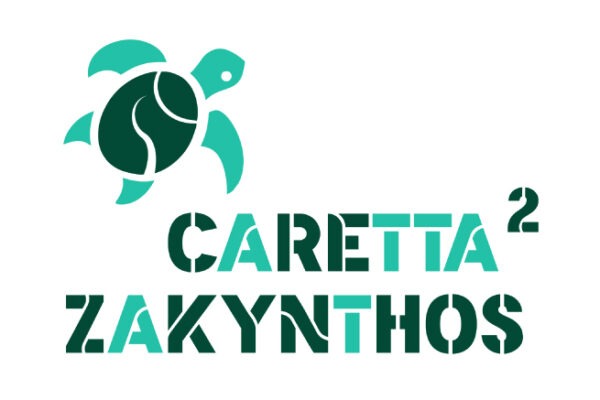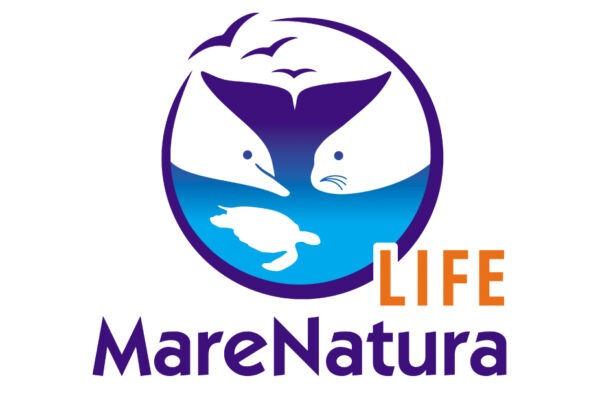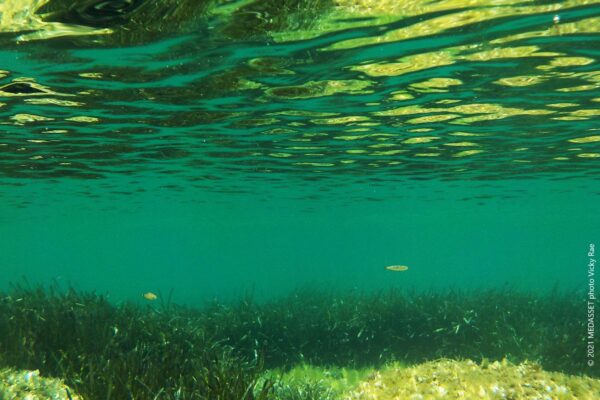The project was organized by the Regional Activity Centre for Specially Protected Areas (RAC/SPA, UNEP/MAP) and funded by, in alphabetical order, the Marine Biology Reserve Centre (Tajura, Libya), MEDASSET, the Technical Centre for Environmental Protection (Tripoli; now the Environment General Authority ), the RAC/SPA and the World Wide Fund for Nature (WWF International Mediterranean Programme). The project was portioned into three phases, each focused on surveying their respective sections of the Libyan coastline; MEDASSET was involved in phase 1 and 3 of the project that scouted the coasts between the Egyptian border and Sirte in 1995 and between the Tunisian border and Misratah in 1998 respectively.
The results of the 1995 survey, carried out in June and July, found 342 total crawl tracks of nesting females and 176 nests, which were present on almost all of the prospected beaches. It also recorded a significant threat of predation linked to carnivores and sand crabs, which is associated with a 44.8% loss of egg clutches to predators. Phase 2 of the project, in 1996, analyzed the shore between Sirte and Misratah, finding 66 crawl tracks. Phase 3 of the project in 1998 found 15 crawl tracks of nesting loggerhead females and discovered that this particular portion of Libya practices a tradition of turtle egg consumption. In terms of additional threats to sea turtles, more recent studies also conclude that the levels of turtle bycatch by fishermen nets and other fishing gear are also problematic for Mediterranean turtles.
Data from this project was vital as Libyan beaches were speculated to host a large proportion of Mediterranean loggerhead turtles, but the lack of data from this Mediterranean nation made species conservation efforts difficult. The project confirmed that nesting occurs along the Libyan coast and identified nesting beaches that need to be further systematically monitored in order to increase knowledge on sea turtles nesting in Libya and to afford appropriate protection to the species and these habitats.

Map of Libyan coast showing known loggerhead nesting sites and sites in need of further surveying. Source: Hamza A A. “Lybia”. 2010. In: Casale, P. and Margaritoulis, D. (Eds.). 2010. Sea Turtles in the Mediterranean: Distributions, threats and conservation priorities. Gland, Switzerland: IUCN. 294 pp.
Libya’s sea turtle conservation programme continues
In 2004, researchers of the Libyan Marine Biology Research Centre surveyed 26 km of beaches in the eastern coast of Libya and identified 8 new nesting beaches, recording 15 loggerhead crawls of which 8 resulted in nests.
In 2005, as an initiative to implement the national action plan for the conservation of sea turtles and their habitat, the Libyan Sea Turtle Program (LibSTP) was officially launched by the Environment General Authority (EGA) of Libya; the goal is to study, protect and to raise awareness about Mediterranean sea turtles in Libya. In addition, the programme trains turtle enthusiasts and students to voluntarily survey and protect nesting beaches. Surveys in 2005-2008 indicated that nesting is largely concentrated mainly in four areas: the Gulf of Sirte, the region around Benghazi, some sandy beaches of Aljabal Alakhdar (Cyrenaica) and the region of Derna-Tubrok. In 2005, 73 nests were protected on 3 beaches west of Sirte and a total of 3,179 hatchlings were successfully released. A total of 550 nests were recorded in 2006 and 841 were documented in 2007, at 28 beaches along the Libyan coast. During the 2009 season, 358 nests were recorded in five nesting beaches in the region of Sirte. LibSTP’s project in 2008-2009, in addition to patrolling some of the nesting beaches, also raised awareness through national media and improved the previously unsuccessful tagging of sea turtles, by switching from plastic to inconel metal flipper tags (tag series LY0001-1000).



